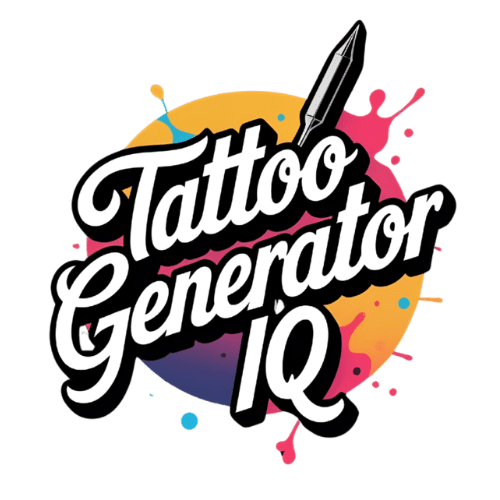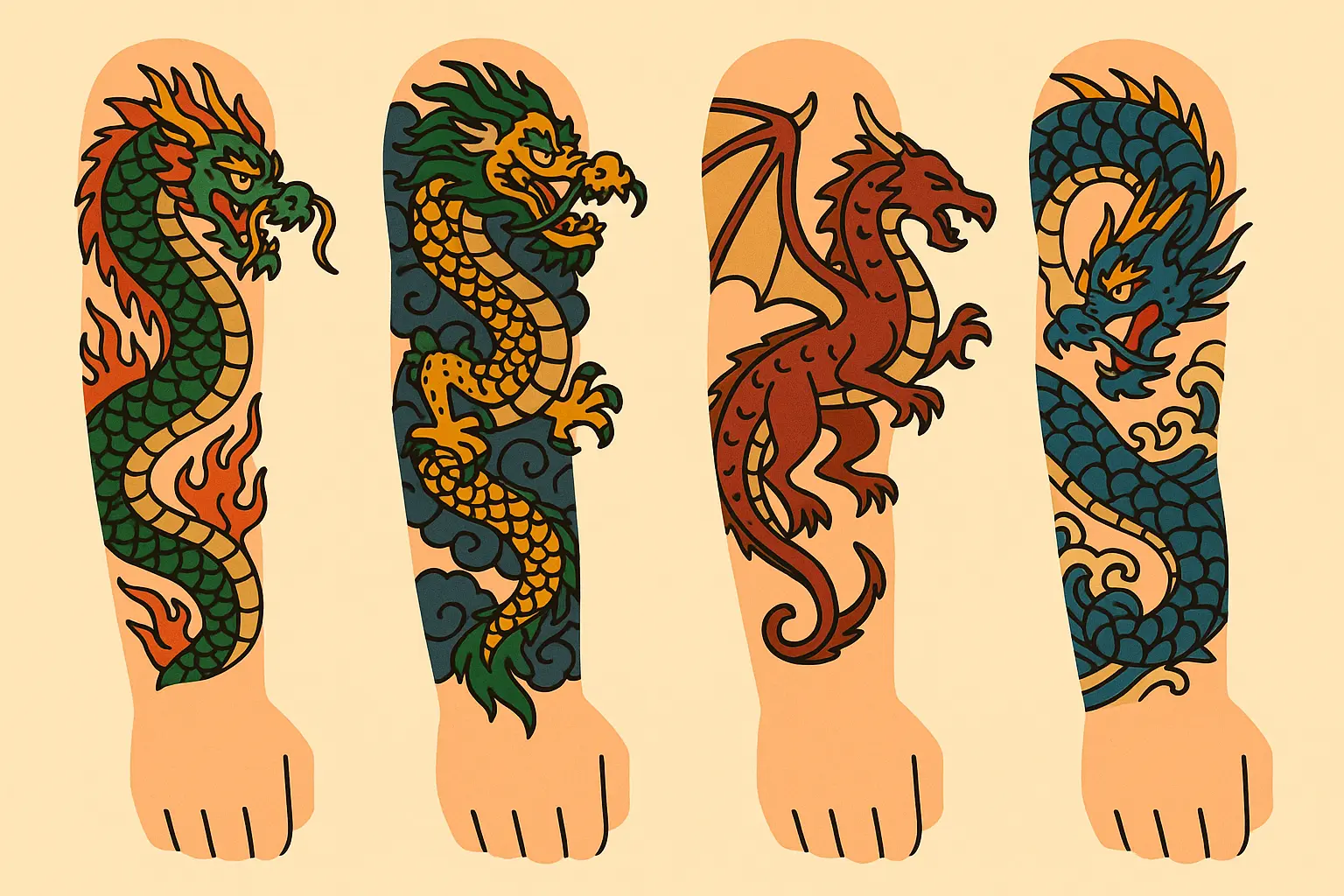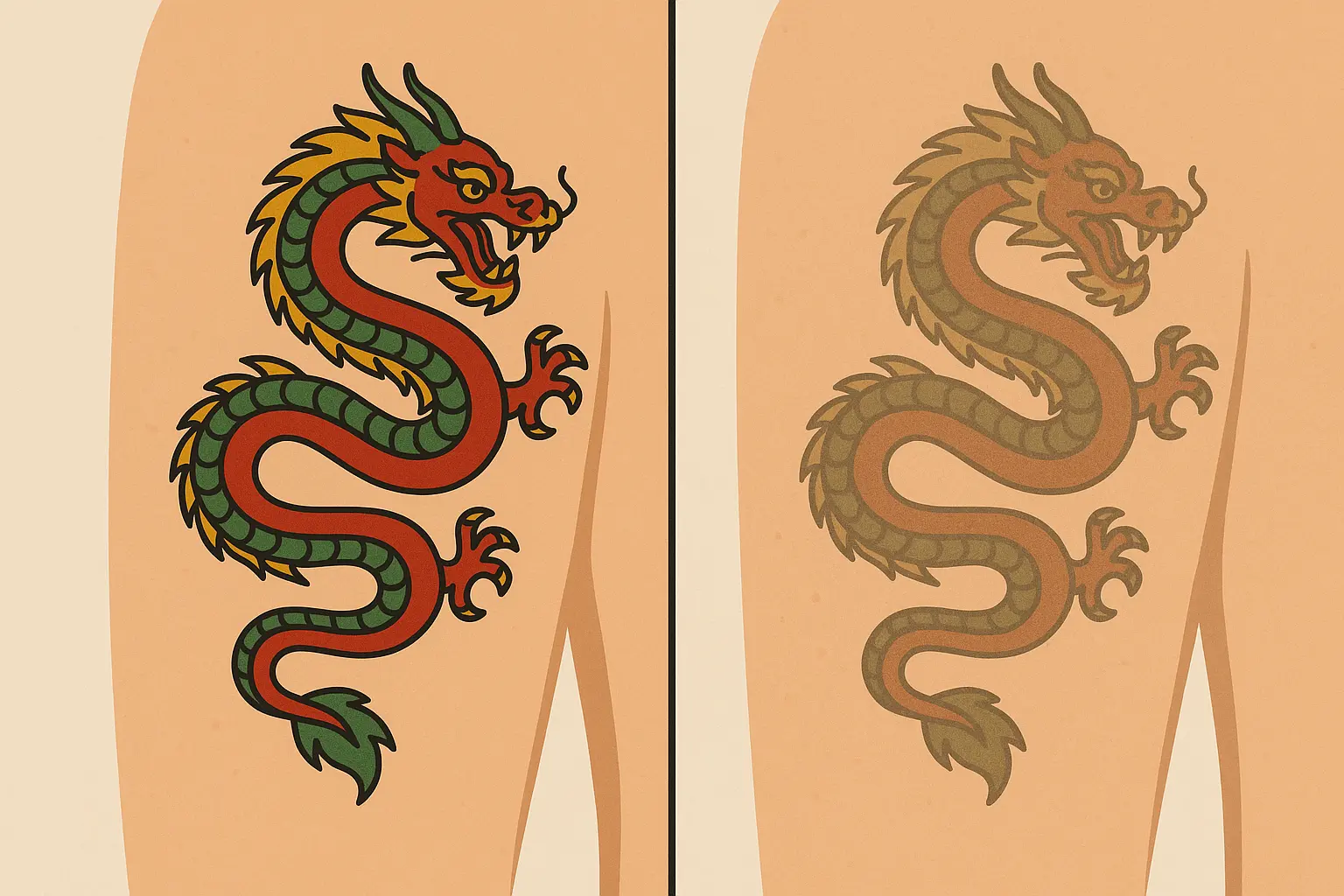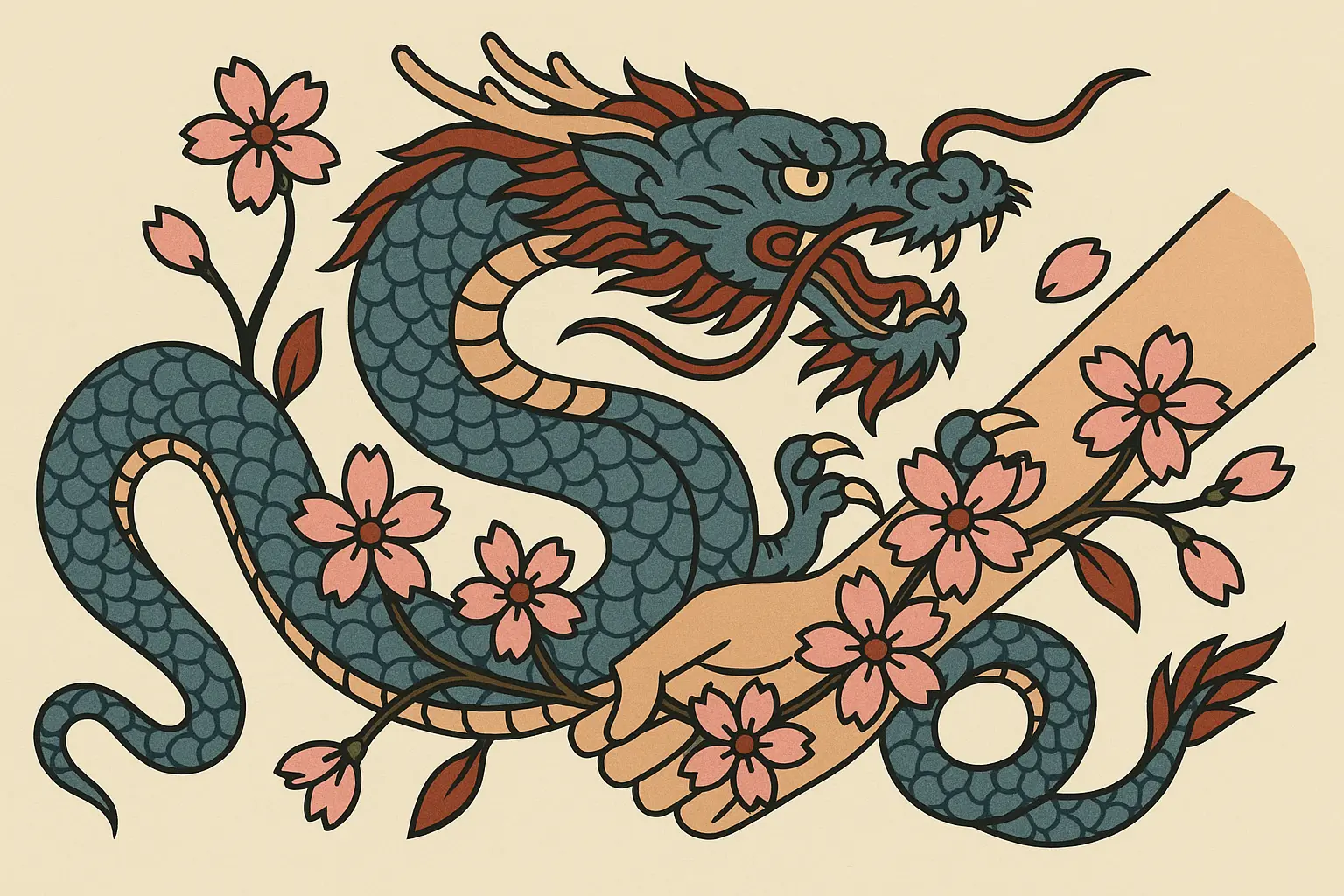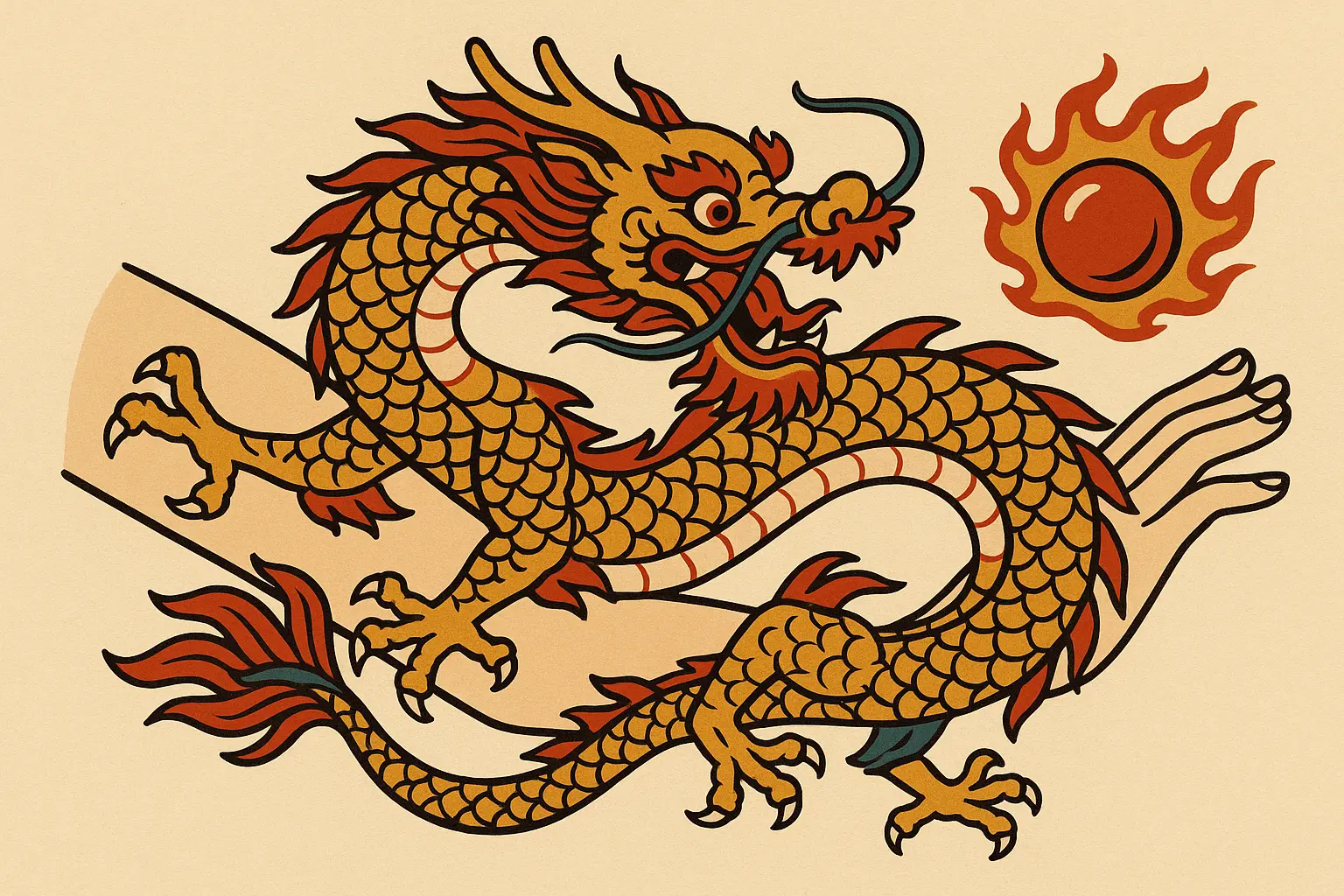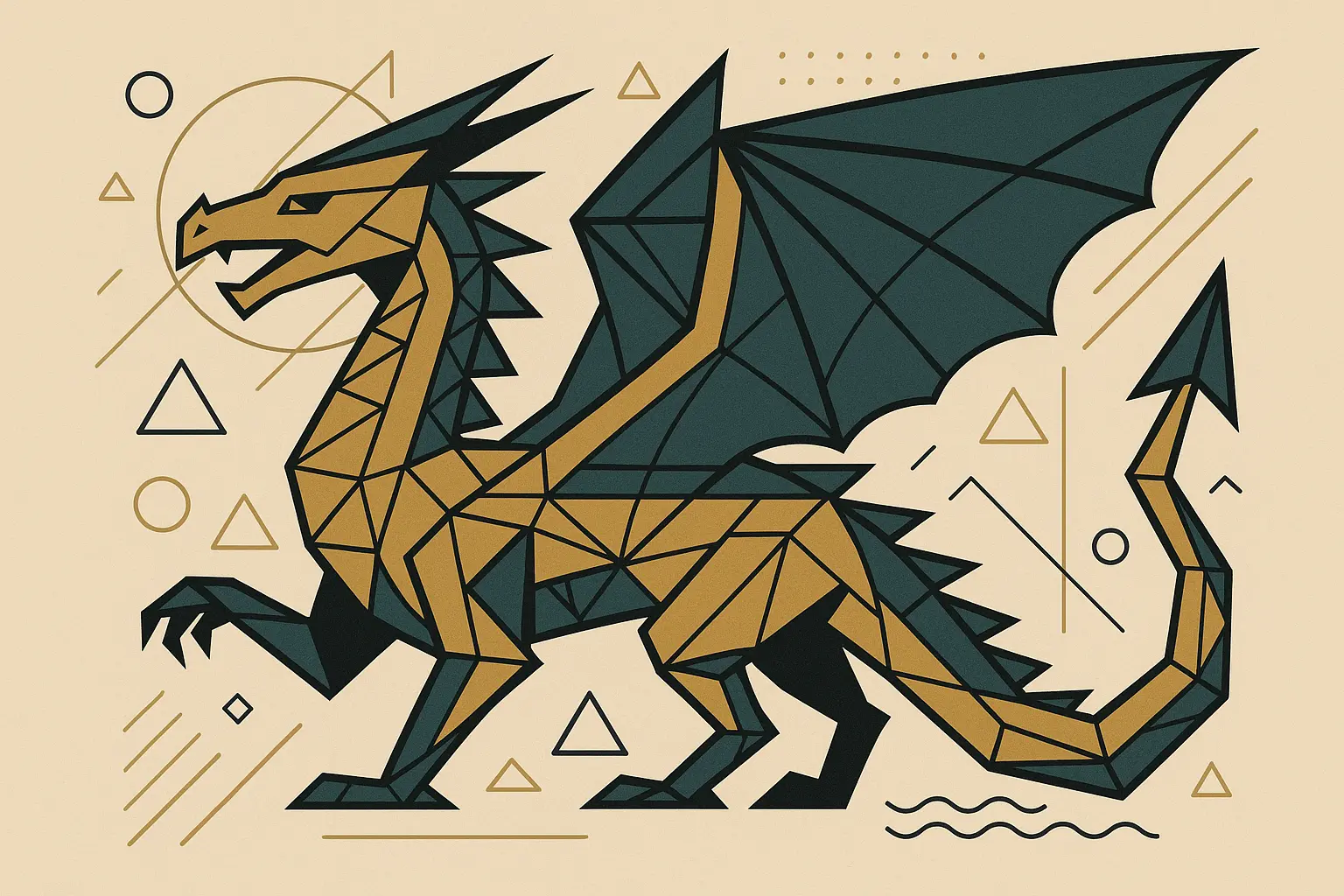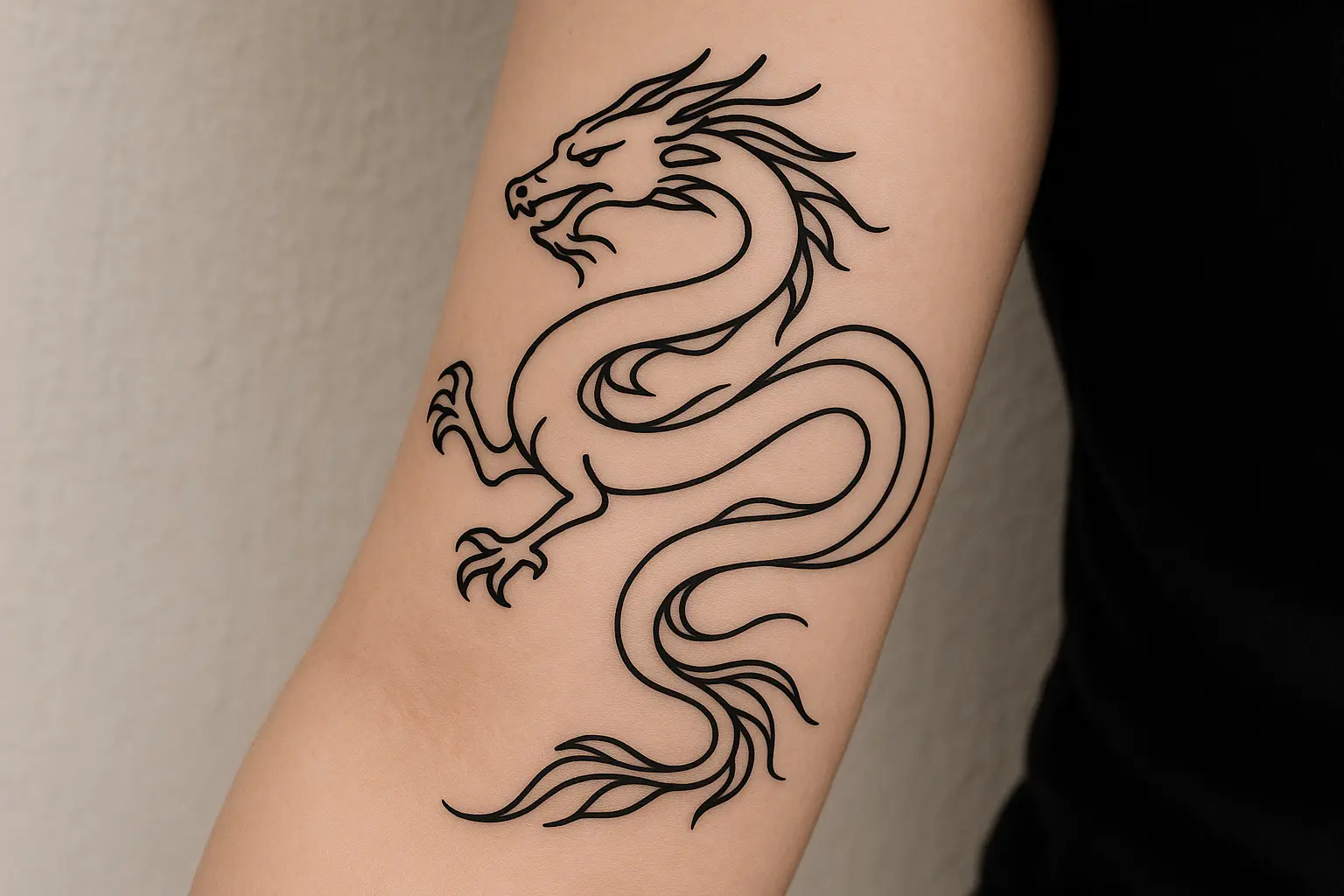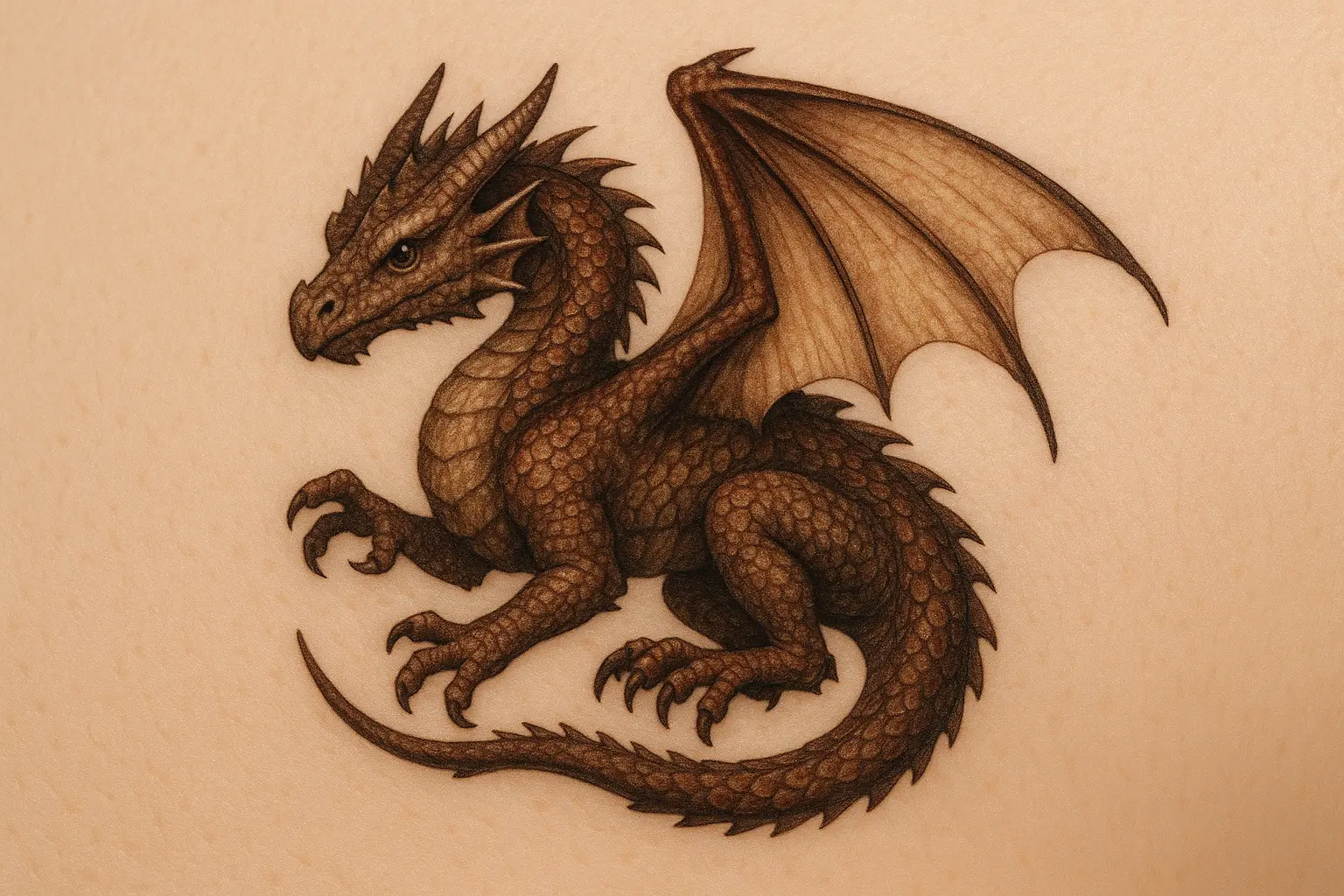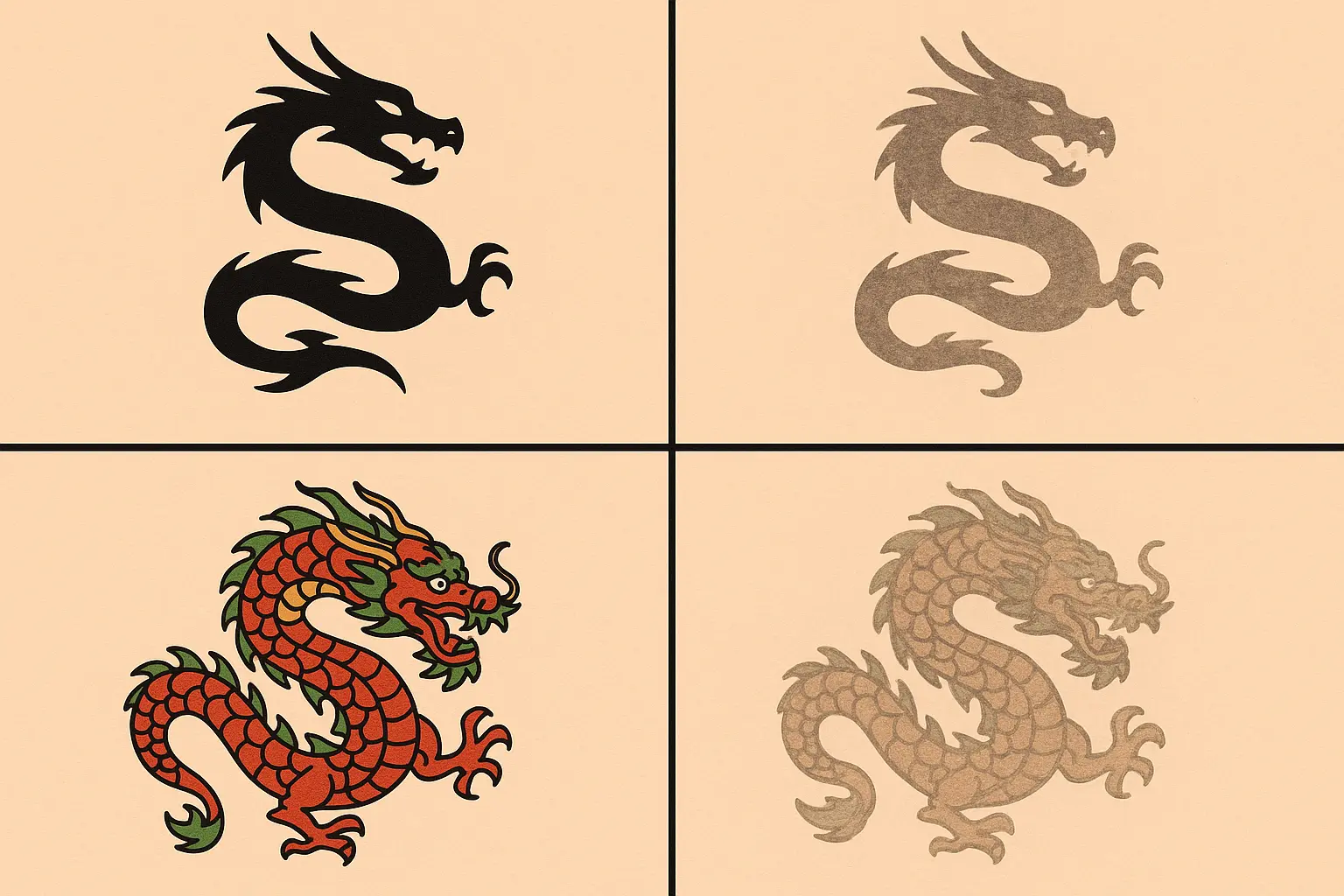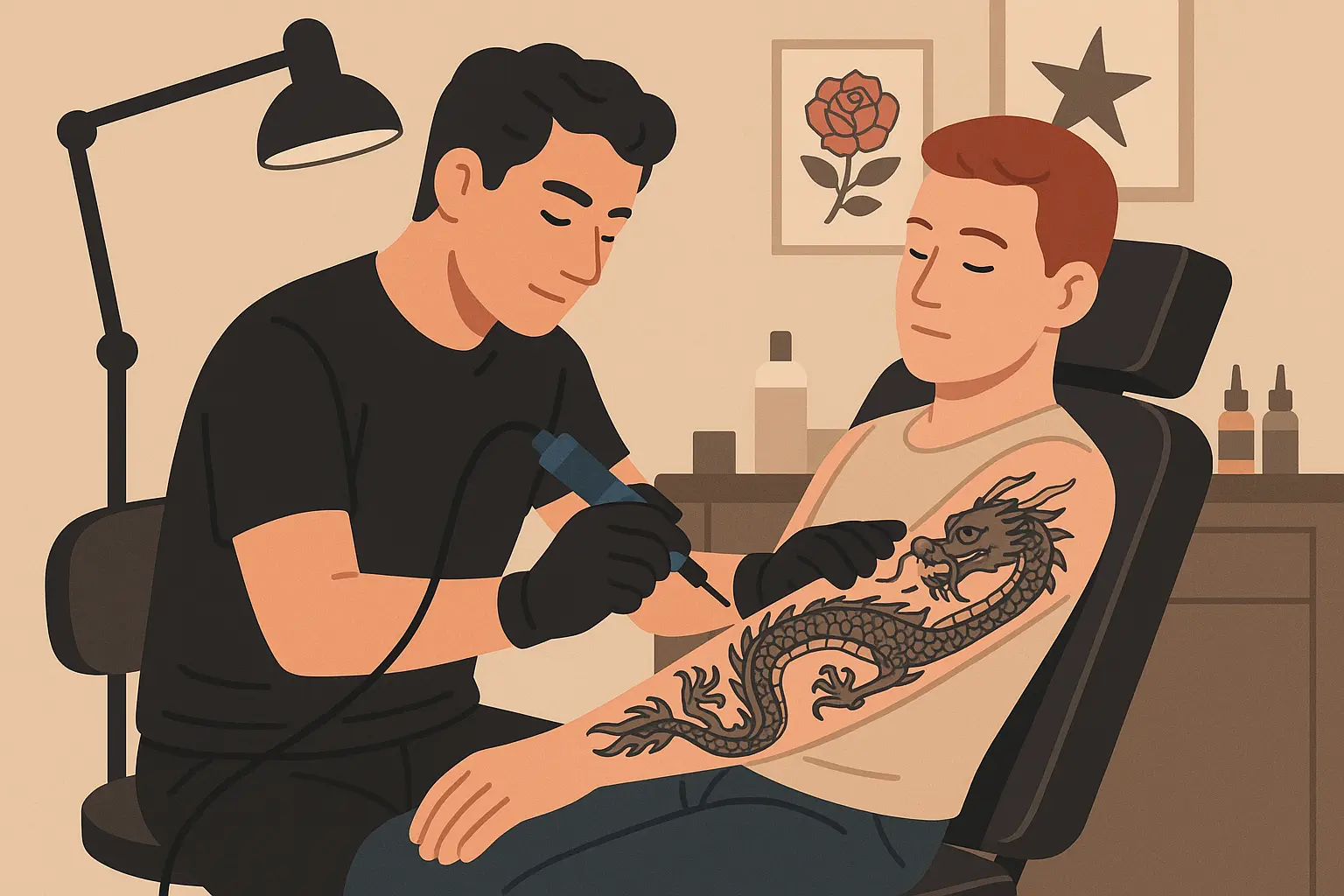25 Top Dragon Sleeve Tattoos That Will Transform Your Arm Into a Masterpiece
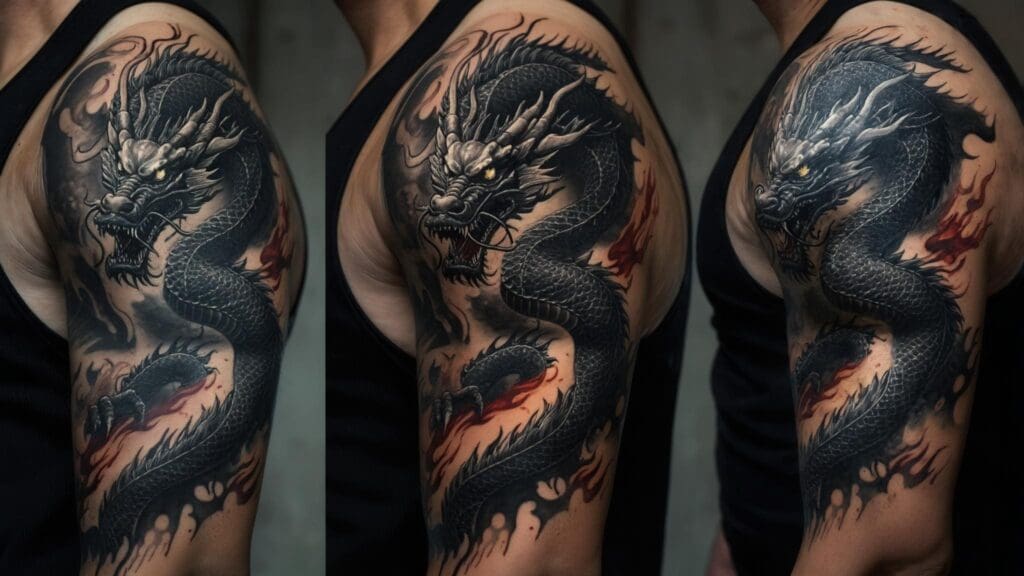
I’ll never forget the first time I saw a proper dragon sleeve. I was grabbing coffee when this guy rolled up his shirt sleeve, and I literally stopped mid-sip. This incredible Japanese dragon was wrapped around his arm like it was alive – scales that seemed to shimmer, eyes that followed you. That’s when I knew I had to learn everything about dragon sleeve tattoos.
Dragons have been blowing people’s minds in tattoo shops for centuries, and there’s a damn good reason why. Whether you’re drawn to the flowing wisdom of traditional Japanese ryu or you want something that looks like it could torch a medieval village, choosing the right dragon sleeve isn’t just about picking something that looks cool on Pinterest.
Look, I’m not gonna sugarcoat this – dragon sleeves are a big deal. We’re talking serious money, serious time, and something that’s going to be part of you forever. But when it’s done right? Holy shit, it’s pure art in motion.
Table of Contents
-
Essential Considerations for Dragon Sleeve Tattoos
-
Traditional Japanese Dragon Sleeves (Irezumi Style)
-
1. Classic Ryu with Cherry Blossoms
-
2. Koi-to-Dragon Transformation
-
3. Dragon and Phoenix Pairing
-
4. Minimalist Sumi-e Dragon
-
5. Dragon with Temple Architecture
-
-
Chinese Traditional Dragon Sleeves
-
6. Imperial Five-Clawed Dragon
-
7. Dragon Chasing Flaming Pearl
-
8. Celestial Dragon with Zodiac Elements
-
9. Dragon and Tiger Balance
-
10. Water Dragon with Waves
-
-
Western Fantasy Dragon Sleeves
-
11. Medieval European Dragon
-
12. Celtic Knotwork Dragon
-
13. Norse Dragon (Lindworm)
-
14. Steampunk Mechanical Dragon
-
15. Gothic Gargoyle Dragon
-
-
Modern Artistic Interpretations
-
16. Geometric Dragon
-
17. Watercolor Dragon
-
18. Biomechanical Dragon
-
19. Tribal Dragon Fusion
-
20. Neo-Traditional Dragon
-
-
Minimalist and Fine Line Dragons
-
21. Single Line Dragon
-
22. Fine Line Scale Detail
-
23. Dotwork Dragon
-
24. Outline Dragon with Selective Color
-
25. Micro-Realistic Dragon
-
-
Cultural Fusion and Unique Concepts
-
Design Analysis and Key Considerations
-
How Tattoo Generator IQ Can Transform Your Dragon Vision
TL;DR
-
Dragon sleeves aren’t something you rush into – they need serious planning, serious money, and a serious artist
-
Japanese and Chinese designs look incredible but you better find an artist who actually knows their stuff culturally
-
Western dragons are badass but can be tricky to wrap around your arm naturally
-
Minimalist dragons age like fine wine but might not give you that “holy crap” factor you’re looking for
-
Plan on 15-35 hours in the chair and anywhere from $2,000-$8,000+ depending on complexity
-
Not every tattoo artist can pull off dragons – find someone whose dragon work makes you say “damn” every time
-
Those gorgeous colors? They’re going to need touch-ups, so budget for maintenance
Essential Considerations for Dragon Sleeve Tattoos
Here’s what nobody tells you when you’re scrolling through dragon tattoo inspiration at 2 AM: getting a dragon sleeve that doesn’t suck requires way more planning than you think. Before diving into specific designs, understanding the cost breakdown for half sleeve tattoos can help you figure out if your wallet is ready for this journey.
If you want a dragon sleeve that’ll still look amazing in 20 years, you need to think about way more than just “that one looks cool.” We’re talking design quality, cultural respect, how it’s going to flow with your actual human arm, colors that won’t turn into mud, and finding an artist who won’t turn your dragon into an angry lizard.
Design Quality and Artistic Execution
Here’s the deal: dragons are complicated as hell to tattoo well. Those scales need to look like scales, not fish net stockings. The shading has to flow naturally, and the whole thing needs to work with how your muscles actually move.
Your artist needs to understand that what looks sharp and clean today might blur into mush in a decade if they don’t nail the line weights. Consider checking out pain level expectations for different arm areas because some parts of your dragon are going to hurt way more than others.
Cultural Authenticity and Style Selection
All that cultural authenticity talk sounds scary, but here’s the deal: just don’t be the person who gets Chinese characters that say “chicken soup” thinking they mean “warrior spirit.” Different dragon traditions mean different things, and mixing them wrong can look ridiculous.
Japanese dragons are the wise old masters – they’re about flow, water, and looking like they could give you life advice. Chinese dragons? They’re the emperors – all about power and “bow down to my five claws.” Western dragons just want to burn your village down and steal your gold. Know what you’re getting into.
|
Dragon Style |
Where It’s From |
What Makes It Special |
What It Means |
How Hard Is It |
|---|---|---|---|---|
|
Japanese (Ryu) |
Japan |
Flows like water, serpentine body |
Wisdom, strength, good fortune |
Pretty damn hard |
|
Chinese Imperial |
China |
Five claws, clouds, flaming pearls |
Imperial power, celestial authority |
Extremely hard |
|
Western Fantasy |
Europe/Modern |
Big wings, four legs, ready to fight |
Power, protection, conquest |
Moderately hard |
|
Celtic Dragon |
Celtic/Irish |
Knotwork that’ll make your head spin |
Eternal cycles, spiritual connection |
Mind-bendingly hard |
|
Modern Geometric |
Contemporary |
Angular lines, mathematical precision |
Innovation, uniqueness |
Moderately hard |
Placement and Body Flow Considerations
Here’s what I wish someone had told me: dragons need to look natural when you move your arm. I’ve seen too many people with dragons that look awesome when their arm is perfectly positioned, but turn into pretzel disasters when they actually use their arm like a normal human.
Your dragon’s body needs to follow your muscle contours. When you flex, those scales should ripple naturally, not stretch into weird shapes. The dragon’s head should go somewhere that won’t get distorted every time you move.
Take my buddy Jake – he’s a bodybuilder who got smart about placement. His artist mapped out exactly how the dragon would look when he flexed, when he was relaxed, when he reached for stuff. The result? A dragon that looks like it’s living on his arm, not just painted on it.
Color Palette and Aging Expectations
Let’s be real about colors: that gorgeous full-color dragon? It’s going to need touch-ups. Those vibrant reds and blues that look incredible fresh out of the chair will fade, especially if you’re a beach person or work outside.
Black and grey dragons age like fine wine, but they might not give you that dramatic impact you’re craving. It’s a trade-off between “holy crap, look at that” and “this still looks good in 15 years.” Think about your lifestyle and how much maintenance you’re willing to deal with.
Traditional Japanese Dragon Sleeves (Irezumi Style)
Japanese dragon sleeves are the gold standard for a reason – these designs have been perfected over centuries. They flow like water, tell stories, and when done right, they’re absolutely breathtaking. For those wanting authentic Japanese aesthetics, checking out traditional Japanese tattoo designs can give you the cultural context you need.
But here’s the catch: not every tattoo artist can pull off authentic Japanese work. You need someone who understands the cultural traditions, knows how to make that serpentine body flow naturally, and can execute those delicate details without turning them into a mess.
1. Classic Ryu with Cherry Blossoms
This is the dragon sleeve that started it all for most people. Picture a serpentine Japanese dragon weaving through delicate pink cherry blossoms with flowing water elements. It’s elegant, it’s traditional, and when done right, it’s absolutely stunning.
The Real Deal: This isn’t a design for your buddy who just started tattooing out of his garage. You need someone who can make those cherry blossoms look delicate without turning them into pink blobs in five years. The scales need consistent spacing, the water needs to actually flow, and the whole thing needs to wrap around your arm like it belongs there.
Bottom Line: Plan on 20-25 hours across multiple sessions and expect to pay premium prices. The blue-grey dragon with pink sakura ages beautifully, but those gold accents? They’ll need touch-ups every 5-7 years.
2. Koi-to-Dragon Transformation
This one tells the legendary story of a koi fish swimming upstream and transforming into a dragon. It usually starts with detailed koi scales at your wrist and gradually becomes dragon features toward your shoulder. The symbolism is powerful – it’s about perseverance and achieving your goals.
The Real Deal: This transformation thing is no joke to execute. Your artist needs to seamlessly morph fish scales into dragon anatomy without making it look like two different tattoos stuck together. It’s one of the most challenging designs to pull off convincingly.
Bottom Line: You’re looking at 25-30 hours and premium pricing. The color gradation from koi oranges to dragon blues is complex and will need periodic touch-ups to keep that transformation looking smooth.
3. Dragon and Phoenix Pairing
This design represents the balance between masculine and feminine energies – dragon and phoenix working together in harmony. Usually, the dragon dominates the outer arm while phoenix elements flow along the inner arm.
The Real Deal: Balancing two complex mythological creatures without making them compete for attention? That takes serious artistic skill. Plus, you’re dealing with a rich palette of reds, golds, and blues that all need to work together.
Bottom Line: This is top-tier complexity requiring 30-35 hours across 6-7 sessions. Expect premium pricing, and those gold leaf effects? They’ll need refreshing every 3-5 years.
4. Minimalist Sumi-e Dragon
Inspired by Japanese ink painting, this style emphasizes flowing brushstroke-like lines and lots of negative space. It’s all about movement and gesture rather than detailed scales.
The Real Deal: Don’t let the “minimalist” fool you – this requires perfect line control. Every stroke needs to look intentional and flowing, like traditional brush painting. One wonky line and the whole thing falls apart.
Bottom Line: About 10-15 hours across 2-3 sessions with moderate cost. Primarily black ink means it ages exceptionally well with minimal maintenance.
5. Dragon with Temple Architecture
This incorporates traditional Japanese temple elements like pagodas or torii gates as background elements. The dragon interacts with the architecture, creating depth and serious cultural vibes.
The Real Deal: Your artist needs to know their Japanese architecture and understand perspective. The dragon has to interact naturally with the buildings without looking like it’s photobombing a postcard.
Bottom Line: Plan on 25-30 hours with high costs due to architectural complexity. Earth tones for architecture with traditional dragon colors work well, though stone textures may soften over time.
Chinese Traditional Dragon Sleeves
Chinese dragons bring a different energy – they’re all about imperial power, celestial connection, and serious cultural weight. These aren’t just pretty pictures; they carry historical significance that demands respect.
Chinese dragons emphasize power and wisdom through distinctive five-clawed dragons, flaming pearls, and zodiac elements. But here’s the thing – you better understand what you’re putting on your body and find an artist who respects the cultural significance.
6. Imperial Five-Clawed Dragon
This is the big daddy of Chinese dragons – historically reserved for emperors only. Five claws (not four, not six), surrounded by cloud motifs and flaming pearls. Traditional colors of gold, red, and deep blue.
The Real Deal: The claw count matters. Seriously. This design carries serious cultural weight, so you need an artist who understands and respects imperial dragon conventions. No shortcuts, no creative liberties with the anatomy.
Bottom Line: 22-28 hours with premium pricing due to cultural significance. Those gold elements will need periodic maintenance to keep their brightness.
My friend Maria wanted to honor her Chinese heritage with an imperial dragon. She spent months researching historical designs and found an artist who specialized in traditional Chinese work. They incorporated elements from her grandmother’s jade bracelet into the cloud motifs. The result? A culturally authentic piece that connected her to her roots without disrespecting tradition.
7. Dragon Chasing Flaming Pearl
The classic motif
The classic motif of a Chinese dragon pursuing wisdom (represented by the flaming pearl). The composition creates dynamic movement as the dragon curves around your arm following the pearl’s path.
The Real Deal: The pearl placement determines everything about this composition. Get it wrong and the whole flow falls apart. The flame effects around the pearl need to look like actual flames, not squiggly lines.
Bottom Line: 18-22 hours with moderate to high cost depending on flame detail. Pearl luminescence effects may need touch-ups while the dragon follows traditional Chinese color schemes.
8. Celestial Dragon with Zodiac Elements
This incorporates your Chinese zodiac animal alongside the primary dragon design. It creates a personalized narrative combining your birth year with dragon power.
The Real Deal: Multiple creatures mean multiple opportunities for things to go wrong. Your artist needs to be skilled at rendering different animals and understanding how they interact symbolically.
Bottom Line: 25-35 hours with costs varying significantly based on which zodiac animals you include. Each creature has different color requirements and maintenance needs.
9. Dragon and Tiger Balance
Represents the eternal struggle between dragon (heaven, spiritual power) and tiger (earth, physical power). Usually shows both creatures in dynamic interaction.
The Real Deal: This is advanced-level symbolism requiring cultural understanding and serious artistic chops. Both creatures need to look powerful without one overwhelming the other.
Bottom Line: 28-35 hours in the premium pricing category. Traditional color schemes with earth tones for tiger and celestial colors for dragon create powerful visual impact.
10. Water Dragon with Waves
Features a Chinese dragon emerging from or swimming through stylized ocean waves. Emphasizes the dragon’s connection to water elements and weather control.
The Real Deal: Wave patterns need to look like actual waves, not just wavy lines. The dragon needs to interact naturally with the water elements, not just float on top of them.
Bottom Line: 18-24 hours with moderate to high cost. Blue and white color schemes age well, and the flowing design elements work great with arm contours.
Western Fantasy Dragon Sleeves
Western dragons are basically the heavy metal version of Asian dragons – more attitude, bigger wings, ready to fight your ex. They’re fierce, aggressive, and packed with the kind of fantasy elements that make you think of epic battles and medieval legends.
Western fantasy dragons draw from European mythology and medieval traditions. They’re more aggressive with bat-like wings, four legs, and expressions that say “I will burn your village.” While they might not have the sophisticated flowing characteristics of Asian dragons, they’ve got serious Western cultural appeal.
11. Medieval European Dragon
Traditional Western dragons with bat-like wings, four legs, and fierce expressions. Often includes medieval elements like castles, knights, or heraldic symbols.
The Real Deal: Wings are tricky for sleeve wrapping. They work better as focal pieces rather than flowing sleeve compositions. Your artist needs to understand Western dragon anatomy – it’s different from Asian dragons.
Bottom Line: 20-25 hours with moderate to high cost depending on background detail. Earth tones and metallic accents are typical, and stone/metal textures age moderately well.
12. Celtic Knotwork Dragon
Combines dragon imagery with traditional Celtic knotwork patterns. The dragon’s body often becomes part of the knotwork pattern itself, creating mind-bending interwoven designs.
The Real Deal: This is mathematical precision meets artistic vision. One mistake in the knotwork and the whole pattern falls apart. It’s like a puzzle where every line has to connect perfectly, and there’s no room for “close enough.”
Bottom Line: 25-30 hours with high cost due to pattern complexity. Typically black with limited color accents, but that bold line work ages exceptionally well.
13. Norse Dragon (Lindworm)
Based on Scandinavian dragon mythology – serpentine bodies without wings but with powerful claws and fierce heads. Often includes Norse runes, Viking ship elements, or mythological references.
The Real Deal: Strong mythological connections for anyone into Norse heritage. The serpentine form actually works great for sleeve wrapping, unlike their winged cousins.
Bottom Line: 18-24 hours with moderate cost. Traditional Nordic color schemes of black, grey, and earth tones age beautifully and require minimal maintenance.
14. Steampunk Mechanical Dragon
Fuses dragon anatomy with mechanical elements – gears, steam pipes, clockwork components, brass fittings. It’s like someone took a dragon and gave it a mechanical makeover.
The Real Deal: Finding an artist who can pull off both organic dragon anatomy AND convincing mechanical details? Good luck. This requires dual expertise that’s rare as hell.
Bottom Line: 22-28 hours with high cost due to complexity. Copper, brass, and steel color schemes look incredible, but fine mechanical details may need periodic touch-ups.
15. Gothic Gargoyle Dragon
Inspired by medieval cathedral gargoyles with stone-like textures and architectural integration. Often includes gothic architectural elements, stained glass patterns, or cathedral spires.
The Real Deal: Stone textures need to actually look like stone, not just grey shading. The gothic elements require understanding of medieval architecture – it’s not just “make it look old and spooky.”
Bottom Line: 20-26 hours with moderate to high cost. Grey tones with selective color accents work beautifully and age well over time.
Modern Artistic Interpretations
Modern dragon sleeves throw tradition out the window and embrace cutting-edge artistic techniques. These designs are for people who want something completely unique that screams “I’m not like everyone else.”
Modern interpretations break away from cultural constraints, embracing contemporary techniques like geometric patterns, watercolor effects, and biomechanical fusion. They’re perfect if you want cutting-edge artwork, but heads up – some of these experimental techniques age differently than traditional approaches.
|
Modern Style |
What It’s About |
How It Ages |
Time Investment |
Cost Range |
|---|---|---|---|---|
|
Geometric |
Mathematical precision, clean lines |
Excellent – stays sharp |
15-20 hours |
Moderate |
|
Watercolor |
Soft color blending, paint effects |
Fair – needs touch-ups |
18-25 hours |
High |
|
Biomechanical |
Organic meets machine |
Good – dark colors help |
25-35 hours |
Premium |
|
Neo-Traditional |
Traditional but modern |
Very Good – best of both |
18-25 hours |
Moderate-High |
|
Tribal Fusion |
Bold graphics, negative space |
Excellent – black ink rocks |
12-18 hours |
Moderate |
16. Geometric Dragon
Transforms traditional dragon forms using geometric shapes, angular lines, and mathematical patterns. It’s like someone fed a dragon through a computer and it came out looking awesome.
The Real Deal: Requires mathematical precision – those angles need to be perfect, and geometric relationships need to make sense. But when it’s done right? It’s stunning and completely contemporary.
Bottom Line: 15-20 hours with moderate cost. Limited color palette or black execution ages extremely well because clean lines stay sharp over time.
17. Watercolor Dragon
Uses watercolor painting techniques with flowing colors, paint drips, and soft edges. The dragon emerges from or dissolves into colorful washes.
The Real Deal: I’ve seen too many people get excited about watercolor dragons, only to have them look like a tie-dye accident after a few years. Soft edges are challenging to execute and maintain over time.
Bottom Line: 18-25 hours with high cost due to advanced color techniques. Those soft watercolor effects will naturally soften over time and may need more frequent touch-ups.
18. Biomechanical Dragon
Fuses organic dragon anatomy with biomechanical elements inspired by H.R. Giger’s artwork. Think Alien meets dragon – exposed mechanical components, organic machinery, alien-like tech integration.
The Real Deal: That biomechanical dragon looks sick now, but finding an artist who can pull it off without making you look like a cyborg reject? Good luck. This requires understanding both anatomy AND mechanical rendering.
Bottom Line: 25-35 hours in the premium pricing category. Dark color schemes with metallic accents work best and age better than you’d expect.
19. Tribal Dragon Fusion
Combines dragon imagery with tribal art patterns, creating bold black designs with strong graphic impact. It’s all about flowing lines and negative space.
The Real Deal: Bold graphic impact that ages like a fine wine. Tribal patterns need to respect their cultural origins while integrating naturally with dragon forms.
Bottom Line: 12-18 hours with moderate cost. Strong contrast and bold lines age exceptionally well – this is a solid long-term choice.
20. Neo-Traditional Dragon
Updates traditional dragon imagery with contemporary techniques – enhanced colors, modern shading, stylistic innovations while keeping recognizable traditional elements.
The Real Deal: Best of both worlds approach. You get the cultural connection and time-tested flow of traditional dragons with modern technical improvements.
Bottom Line: 18-25 hours with moderate to high cost. Enhanced color palettes and modern shading techniques actually improve longevity while maintaining cultural connections.
Minimalist and Fine Line Dragons
Minimalist dragons are for people who want to look cool without looking like they raided a medieval gift shop. Sometimes less really is more, and these designs prove that you don’t need elaborate details to create something stunning. Those considering minimalist approaches should check out fine line tattoo concepts for clean, sophisticated dragon inspiration.
Minimalist and fine line dragons focus on clean aesthetics and simplified forms. They age incredibly well, require fewer sessions, and often cost less due to reduced complexity. But they require artists with specialized fine line skills, and they might not give you that dramatic impact many people want from a dragon sleeve.
21. Single Line Dragon
Creates the entire dragon using one continuous line. It’s like artistic showboating – the whole dragon in a single, flowing line that emphasizes movement and minimalism.
The Real Deal: Extremely challenging with no room for corrections. Your artist needs perfect line flow and the ability to maintain dragon recognition in minimal form. When it works, it’s pure artistic genius.
Bottom Line: 8-12 hours across 2-3 sessions with moderate cost. Single bold line ages excellently with minimal maintenance – this is a solid long-term investment.
22. Fine Line Scale Detail
Focuses on intricate scale patterns using fine line techniques. Creates realistic dragon skin texture through precise line work and subtle shading.
The Real Deal: This isn’t minimalist in execution – it’s microscopic precision work. Those fine lines may blur over time, and detail maintenance becomes essential for keeping it crisp.
Bottom Line: 20-30 hours across 5-7 sessions with premium pricing. Fine details work best on areas with minimal skin stretching, so placement is crucial.
23. Dotwork Dragon
Uses stippling and dotwork techniques to create dragon forms through carefully placed dots of varying density. Creates unique texture and shading effects.
The Real Deal: Unique texture technique that creates distinctive visual effects. Dotwork specialization is required, and it’s incredibly time-intensive due to individual dot placement.
Bottom Line: 18-25 hours across 4-6 sessions with high cost. Primarily black execution with excellent aging characteristics due to dot technique durability.
24. Outline Dragon with Selective Color
Bold dragon outline with strategic color application to specific elements like eyes, flames, or claws. Creates striking contrast between black line work and strategic color placement.
The Real Deal: Bold graphic impact with controlled color usage. Strategic color placement draws attention to specific features while maintaining clean aesthetic and easier maintenance than full color pieces.
Bottom Line: 12-18 hours across 3-4 sessions with moderate cost. Selective color maintenance is much easier and less expensive than full color pieces.
25. Micro-Realistic Dragon
Highly detailed, photorealistic dragon imagery in compact compositions. Requires exceptional technical skill to achieve realistic effects in limited space.
The Real Deal: Exceptional technical achievement that’s incredibly difficult to execute. Photorealistic details in limited space with no room for error – this is master-level work.
Bottom Line: 25-35 hours across 6-8 sessions in premium pricing category. May need periodic touch-ups for detail maintenance, and placement is absolutely crucial.
Cultural Fusion and Unique Concepts
Fusion designs let you create something completely personal by blending different cultural elements or adding your own twist. These become true one-of-a-kind artwork that tells your specific story.
Cultural fusion dragons blend elements from multiple traditions or create entirely new interpretations. Think Azt
Cultural fusion dragons blend elements from multiple traditions or create entirely new interpretations. Think Aztec-inspired dragons with feathered serpent elements, Hindu-Buddhist dragons with mandala integration, or contemporary pop culture dragons influenced by anime and gaming. These offer unique personalization but require careful cultural sensitivity.
My buddy David has both Japanese and Celtic heritage, so he worked with his artist to create a fusion design. They combined a traditional Japanese ryu with Celtic knotwork elements – the dragon’s scales incorporated knotwork patterns while maintaining the flowing water elements of Japanese tradition. Celtic spirals were integrated into cloud motifs, creating something that honored both backgrounds without disrespecting either.
Design Analysis and Key Considerations
Understanding how different dragon styles perform over time helps you make smart decisions about your sleeve investment. Each approach comes with trade-offs that affect everything from initial cost to long-term maintenance. Understanding comprehensive arm tattoo planning can help you choose the best approach for your lifestyle.
Here’s the real talk about what works and what doesn’t:
|
Design Category |
What’s Great About It |
What Sucks About It |
Perfect For |
How Much Maintenance |
|---|---|---|---|---|
|
Traditional Asian |
Cultural authenticity, proven flow |
Requires specialized artists |
Cultural connection seekers |
Medium |
|
Western Fantasy |
Familiar imagery, strong impact |
Less sophisticated flow |
Fantasy enthusiasts |
Medium-Low |
|
Modern Artistic |
Unique contemporary appeal |
Experimental aging |
Trendsetters |
Variable |
|
Minimalist |
Excellent aging, clean aesthetic |
Less dramatic impact |
Subtle sophistication lovers |
Low |
|
Cultural Fusion |
Personal storytelling |
Requires cultural sensitivity |
Heritage celebration |
Variable |
Traditional Asian styles have been perfected over centuries. They flow naturally with body contours and use color palettes that age gracefully. But you absolutely need an artist who understands cultural nuances and traditional techniques – no shortcuts allowed.
Western fantasy dragons work great if you grew up with European mythology, but those wing structures and aggressive poses can be tricky when wrapping around arms. They often work better as focal pieces rather than flowing sleeve compositions.
Modern artistic interpretations push boundaries and create unique artwork, but experimental techniques like watercolor effects may require more maintenance over time. It’s a trade-off between uniqueness and longevity.
Minimalist approaches age exceptionally well due to bold, simple lines, but they might not provide the dramatic impact many people want from a dragon sleeve. They’re perfect for people who prefer subtle sophistication over bold statements.
How Tattoo Generator IQ Can Transform Your Dragon Vision
If you’re feeling overwhelmed by all these choices (and honestly, who wouldn’t be?), tools like Tattoo Generator IQ can help you visualize different styles before you commit. Better to figure out what doesn’t work on a screen than on your skin.
Tattoo Generator IQ’s AI-powered platform addresses the common dragon sleeve design challenges by providing cultural accuracy verification, anatomical flow optimization, style transition previews, and session planning assistance. It’s like having a knowledgeable friend help you sort through all the options.
The AI training includes authentic cultural dragon imagery from museum collections and traditional art sources, so your generated designs respect cultural traditions while allowing creative interpretation. You won’t accidentally combine elements that clash culturally or carry meanings you didn’t intend.
The platform understands how dragon anatomy must adapt to human arm contours, automatically adjusting serpentine body curves, wing placement, and compositional elements for natural sleeve flow. This saves you from discovering flow problems after you’re already committed.
Want to see how Japanese elements might look combined with geometric patterns? The style blending capabilities let you explore combinations you might never have considered, helping you discover unexpected artistic directions that perfectly capture your vision.
Based on your chosen design complexity, you’ll get estimates for tattooing time, session breakdown, and budget planning. This helps you prepare financially and mentally for the complete sleeve journey without any nasty surprises. The platform integrates seamlessly with advanced AI tattoo generation technology to deliver professional-quality dragon sleeve concepts.
You’ll get multiple high-resolution variations with technical notes about line weights, shading techniques, and cultural elements. Your tattoo artist gets comprehensive reference materials for accurate execution, improving communication and final results.
Final Thoughts
Here’s what I wish someone had told me: your dragon sleeve is going to be part of you for the rest of your life. Don’t rush it because you saw something cool on Instagram. Don’t cheap out because you want it now. And definitely don’t let anyone talk you into something you’re not 100% excited about. This is your arm we’re talking about.
Dragon sleeve tattoos represent one of the biggest investments you can make in body art, both financially and personally. The 25 designs we’ve covered showcase incredible diversity, from traditional cultural masterpieces to cutting-edge contemporary interpretations. Each style offers unique advantages and challenges that affect everything from execution complexity to long-term aging.
Your choice ultimately depends on your personal aesthetic preferences, cultural connections, budget considerations, and commitment to maintenance over time. Traditional Asian dragons provide time-tested beauty and cultural depth, while modern interpretations offer unique artistic expression. Minimalist approaches age gracefully with minimal upkeep, whereas complex colorful designs create dramatic impact but may require periodic touch-ups.
Remember that finding the right artist is just as important as selecting the perfect design. Dragon sleeves demand specialized skills that not every tattoo artist possesses, so research portfolios carefully and don’t compromise on expertise to save money. The difference between a good dragon sleeve and an exceptional one often comes down to the artist’s understanding of flowing composition, cultural authenticity, and technical execution.
Yeah, your mom’s probably going to have opinions about your dragon sleeve. Just saying. Will it hurt your job prospects? Depends on your job. Corporate lawyer? Maybe keep it coverable. Tattoo artist? You’re probably fine.
Let’s be honest about money here. A quality dragon sleeve is going to cost you anywhere from $2,000 to $8,000+. Yes, that’s car payment money. Yes, it’s worth it if you do it right. No, you shouldn’t finance it on a credit card.
Take your time with this decision. Whether you choose the flowing elegance of traditional Japanese ryu, the imperial power of Chinese dragons, or a completely modern interpretation, make sure it reflects your personal story and aesthetic vision.
Look, getting a dragon sleeve is a big deal. Take your time, do your research, and find an artist whose work makes you say “holy shit” every time you see it. This thing’s going to be on your body forever, so make sure it’s something that’ll make you smile every morning in the mirror.
These dragon sleeve tattoos and arm tattoo dragon designs represent more than just body art – they’re personal statements that connect you to ancient traditions, contemporary artistry, or your own unique creative vision. The dragon half sleeve tattoo options we’ve covered provide pathways for everyone, from those seeking cultural authenticity to individuals wanting cutting-edge artistic innovation.
